This review contains moderate spoilers for Season 1 of Classroom of the Elite, and mild spoilers for Season 2.
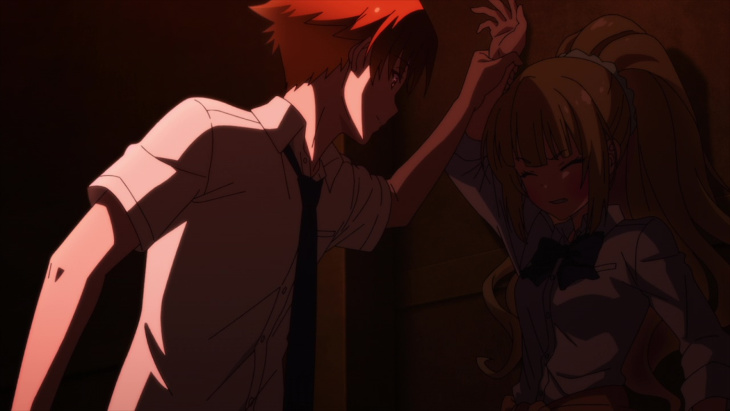
“Maybe he really does like Sato, or maybe… he just wants her as a pawn?… When he already has me?”
When I wrote my First Impressions review a few months ago, I erred on the side of being kind to Classroom of the Elite. I found its decision not to recap any of the first season’s plot points or reintroduce any of the characters frustrating, and the mechanics of the new challenge convoluted. However, I weighed the possibility that, had I watched the first season more recently, the premiere might fall neatly in line. I ultimately decided to rewatch the first season, so as to refamiliarize myself with the events and players, with the intent of jumping back in with season 2. That was probably a mistake. Season 1 is a mostly fun if trashy bit of storytelling that straddles the line between dark and exploitative. Having revisited the first installment, I felt if the show could tamp down some of its more edgy instincts, it could be a decent example of a Machiavellian gamesmanship series. Having watched the second season, I have concluded the show has no interest in tamping down those edgy elements and handily takes the award for “Most Misguided” show I followed this season. What Classroom of the Elite ends up with is a season that looked at the extremes of season 1 and thought, “We should go further.”
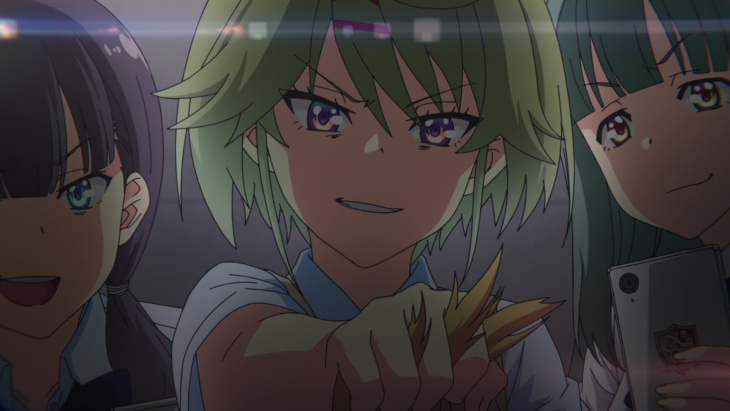
The setting of Classroom of the Elite is the Tokyo Metropolitan Advanced Nurturing School, a high school designed around the ideals of rewarding excellence while punishing mediocrity and poor behavior. This is all implemented with a strong objectivist outlook as the system encourages the students to act towards their own benefit above all else. Our primary lead is Kiyotaka Ayanokoji, an aloof and dispassionate student who ended up in Class D, reserved for students with emotional problems or poor performance. Season 1 followed him as he aided his classmate, Suzune Horikita, with her plans to elevate Class D’s position within the school. Season 1 offered occasional glimpses into Ayanokoji’s personality through brief glimpses of flashbacks or his regular allusions to having a side hidden from others, but this came to a head in the final scene of that season when the show pulled the rug out from under the viewer. After 12 episodes of Ayanokoji lecturing Horikita on how friends and connections would benefit her, his inner monologue reveals that he holds no affection for her or anyone else in his class, and that all of his actions have been part of a self-serving solipsistic outlook. For a show that’d only been okay, that final twist offered a fun recontextualization of his responses to others. One of the biggest problems with season 2 is that it doesn’t seem to know what to do with Ayanokoji now that the cat is out of the bag, at least for the audience. One of the key plot elements of the season involves two factions within the school using a bullied girl as a useful tool. Ayanokoji takes an emotionally manipulative approach that is truly uncomfortable to watch, and even goes so far as to enable some of the bullying. It’s never a good sign when the question of who is more likable between your main character and a group of physically abusive bullies is a subject that could warrant some reasonable debate.
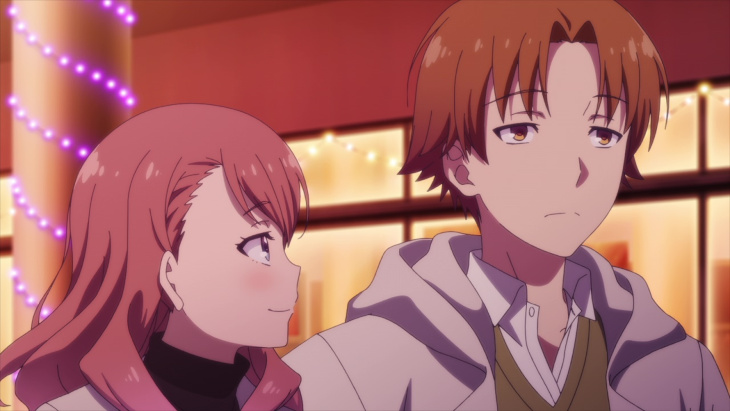
To make matters worse, Ayanokoji inexplicably starts to develop a harem during the course of this season, which is simply unpleasant. The whole idea behind Ayanokoji is that he’s a manipulative psychopath. In the first season, there was a girl, Airi Sakura, who developed a crush on him, but that was at least understandable, given the circumstances, as he offered support and encouragement to her in a time of need. Sure, he was acting in a self-serving manner, but her reactions to the situation made sense. However, his reactions to romantic advances range from aloof to outright rude. Sometimes this is played for comedy, but it’s not funny and usually unpleasant. Thus, seeing more characters fall for him romantically is at best uninteresting, and more often uncomfortable and even disturbing. It’s not too much of a spoiler to acknowledge that one of the characters who starts to become interested in him is the very character who had been bullied, as the show has all the subtlety of the thermonuclear warhead. So the machinations among the members of Class D make my skin crawl, but what about the tests and puzzles put forth by the school itself? The show was never great about laying out the rules of its games, but season 2 seems to just give up. The first arc of the season centers on a complicated group challenge, and despite it being a primary factor in the development of the arc, the show does a terrible job of explaining it. This was an issue with the point system from the island arc, but there was at least enough time for the viewer to wrap their head around it. The group event that kicks off this season has enough win or loss states to completely muddy the waters and it doesn’t even take up a quarter of the episodes, so there is no time to come to grips with it. The best thing I can say about the tests that follow is that they’re not as important to the plot. They share the same lack of clarity, but it proves less detrimental, since the machinations are less intertwined with the internal complexities. Again, it’s not a good sign when you can say, “I didn’t fully grasp the plot, but that’s okay because it didn’t matter.”
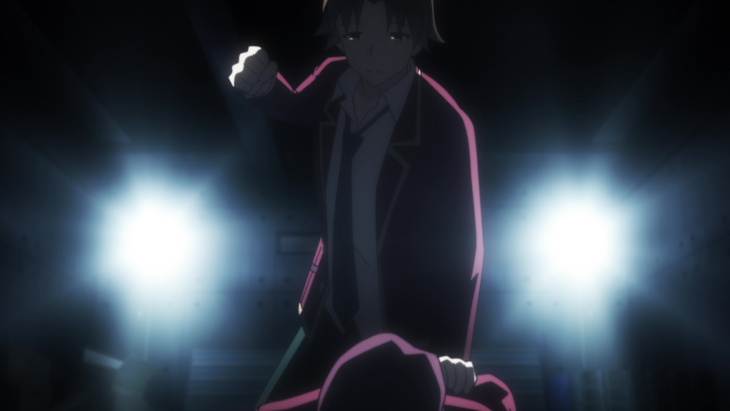
Studio Lerche has returned to produce this new season, and I may as well continue my trend of damning the show with faint praise by saying that this is the quality I’ve come to expect from Lerche. They’ve never been the most aesthetically consistent studio, and while much of the quality is on par with the first season, there were a few instances where their capabilities didn’t seem fully up to the task. The most notable examples would be the climactic scene at the sports festival, and a fight scene towards the end of the season. It was impressive how much my opinion of that fight shifted from moment to moment. The movement itself seemed on point, but the impact of the blows felt muted, as if both sides wanted to avoid hurting anyone, a scenario that was definitely not the case. The music is fine, but isn’t anything to write home about. I found myself consistently skipping the opening and ending credits. I suppose I can find at least one inkling of praise to afford this season over its predecessor. At least it didn’t have a swimsuit episode, and the fanservice seemed less prominent overall.
Before I wrap up, a few Notes and Nitpicks:
- It seems like Horikita fell by the wayside this season. She’s moderately prominent through at least the midpoint, but even then she feels like she’s been relegated to a secondary character.
- The Kushida storyline from season 1 gets a bit more development, as we learn about Kushida and why she hates Horikita, but again, any major progression has been evidently saved for season 3. My feelings on this are mixed as this plot thread included some of my least favorite moments of the first season.
- I noted in my First Impressions review that, between Assassination Classroom, the Danganronpa anime, and Classroom of the Elite, Lerche had developed three of the most prominent entries in the “classroom competition” genre. Furthermore, director Seiji Kishi was involved in the development of all three series. At the time, I asserted that Classroom of the Elite might be the best of the 3, though that wasn’t a high bar to clear. Now, I’d say it was more of a wash, with none of them having much to recommend.
- Ayanokoji is supposed to be both emotionally distant, but also calculating and aware of everyone else’s intentions. Unfortunately, this makes his apparent obliviousness of other people’s advances all the more frustrating. From a writing standpoint, he’s probably just playing dumb, but he does it consistently to everyone and never acknowledges it in his narration.
- I could see myself checking out season 3, but that would be driven more by morbid curiosity than engagement. I guess we’ll see when it rolls around.

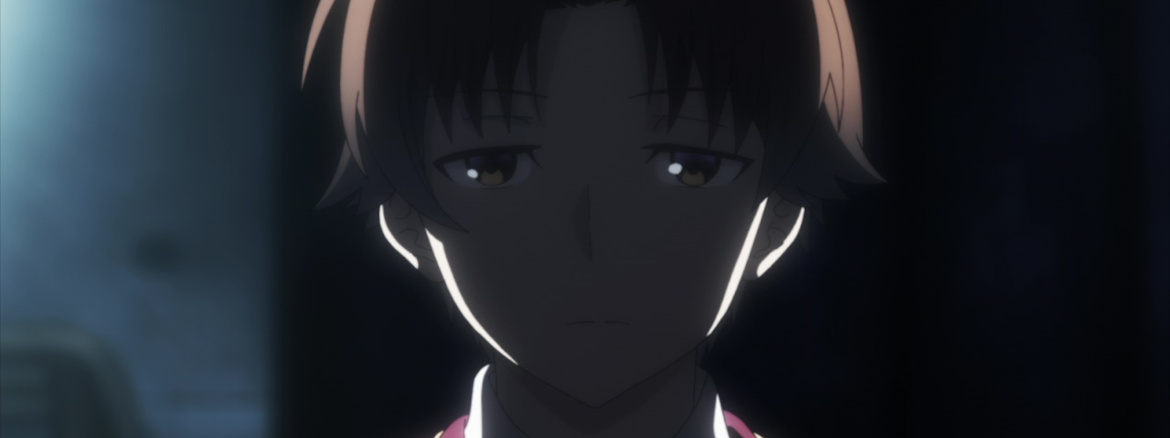


Add comment